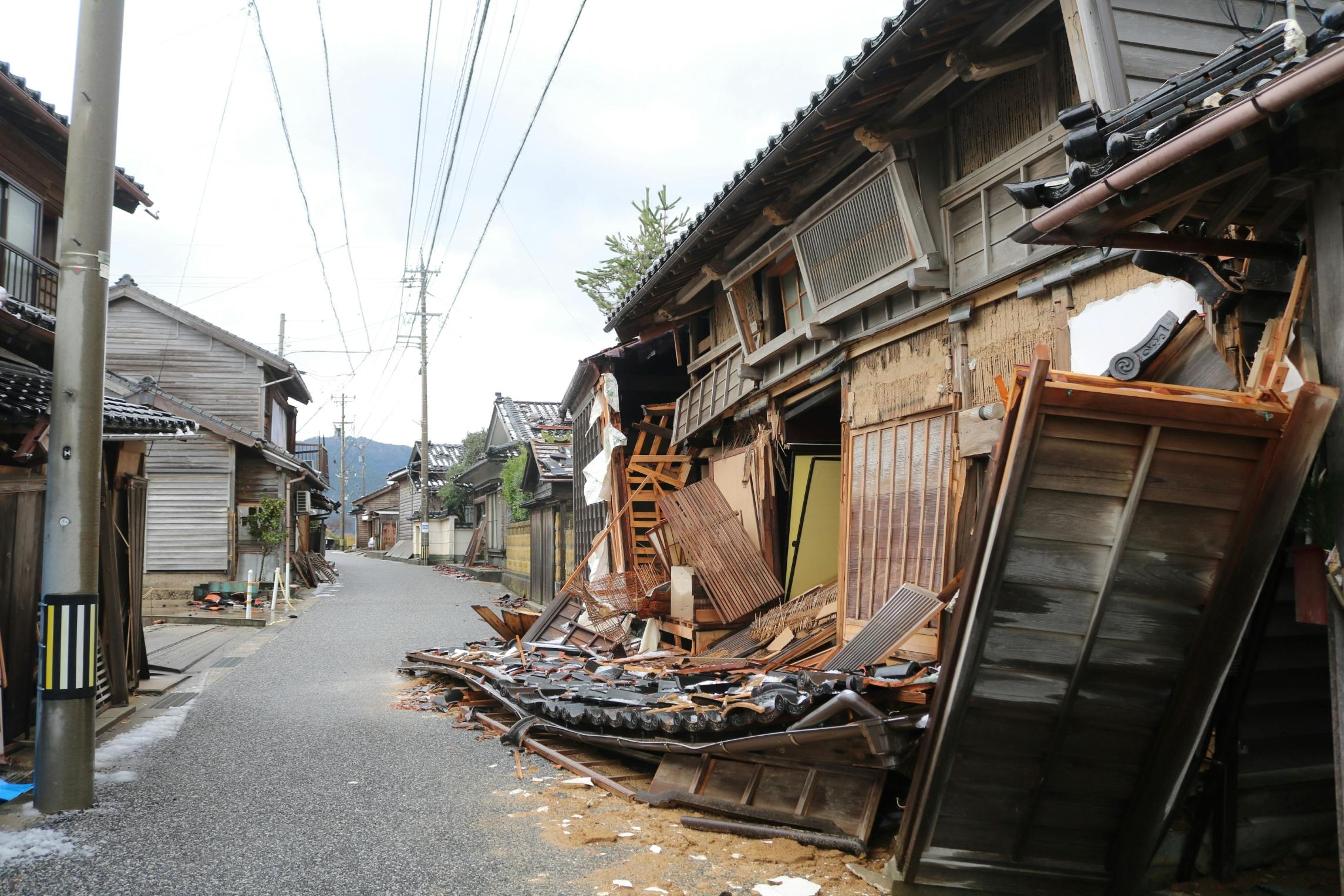Noto Peninsula Heritage Sites, Japan

After a devastating earthquake in January 2024, restoring historic buildings in this hard-hit region can spur cultural, social, and economic recovery. Inclusion on the 2025 Watch will support the Noto Peninsula Heritage Sites’ transformation into a model for community resilience.
Explore the 2025 WatchNoto’s Cultural and Natural Heritage
Situated in the Hokuriku region on Japan’s western coast, the Noto Peninsula is renowned for its rustic natural beauty and enduring traditions. With a history spanning 6,000 years, the region’s rich cultural tapestry features Jōmon-era archaeological sites, former fishing villages, centuries-old agricultural landscapes, and celebrated craft traditions such as Wajima lacquerware and Suzu pottery.
The deep-rooted connections that Noto communities share with their cultural and natural heritage are embodied in their local industries, built environment, and ways of life.

2024 New Year’s Day Earthquake
On January 1, 2024, a magnitude-7.6 earthquake struck the Hokuriku region, triggering a tsunami, fires, widespread soil liquefaction, and hundreds of aftershocks. With the earthquake’s epicenter at its northern tip, the Noto Peninsula was the hardest hit area. In total, the New Year’s Day earthquake claimed over 460 lives and damaged over 136,000 homes, as well as countless historic places.
Efforts to assess and recover the damage have advanced slowly in the Noto Peninsula, meaning that the cultural, economic, and social fabric of its communities continue to fray. Devastation to landmarks that embody local history and identity threatens to collapse the local tourism and crafts industries that once sustained local communities.
With an even greater portion of the population aged 65 or older than the national average, many fear that those who were evacuated may never return, exacerbating a rural depopulation trend.
Community Resilience Through Heritage Preservation
However, an opportunity arises to transform Noto into a model of extraordinary community resilience driven by heritage preservation. Restoring local heritage sites with a focus on seismic resistance can help build the region’s future resilience, invite the return of tourism and industry, and potentially reverse the region’s shrinking population.
Further opportunity lies in mobilizing organizations that helped rebuild communities affected by the 2011 Tōhoku earthquake and tsunami in northeastern Japan, who are eager to leverage their support and help build capacities for future earthquake response nationwide.

Joining the 2025 Watch
By including heritage sites affected by the Noto earthquake on the 2025 World Monuments Watch, World Monuments Fund leads a series of community-driven preservation projects in the Noto Peninsula to catalyze the region’s recovery and resilience.

Voices of Local Residents

"The shrine is a place of refuge for the area… It feels like our soul has been taken away.”
WMF local partner Takuo Kurosawa (pictured above), a community advocate who runs a guesthouse in the historic shipping town of Kuroshima, speaks with residents about the earthquake's impacts on their lives. Locals worshipped Kuroshima’s guardian deity at Wakamiya shrine, which suffered structural damage in the earthquake.
childhood. She discusses the old tree that protected her family’s home during the earthquake.
Support the Watch
Your gift to the Watch Fund will support our efforts to develop new field projects at Watch sites in partnership with local stakeholders, which range from advocacy and skills training to planning and facilitating physical conservation.
Now through June 30, 2025, your gift will be matched by a group of visionary donors. Give now and double your impact today!



